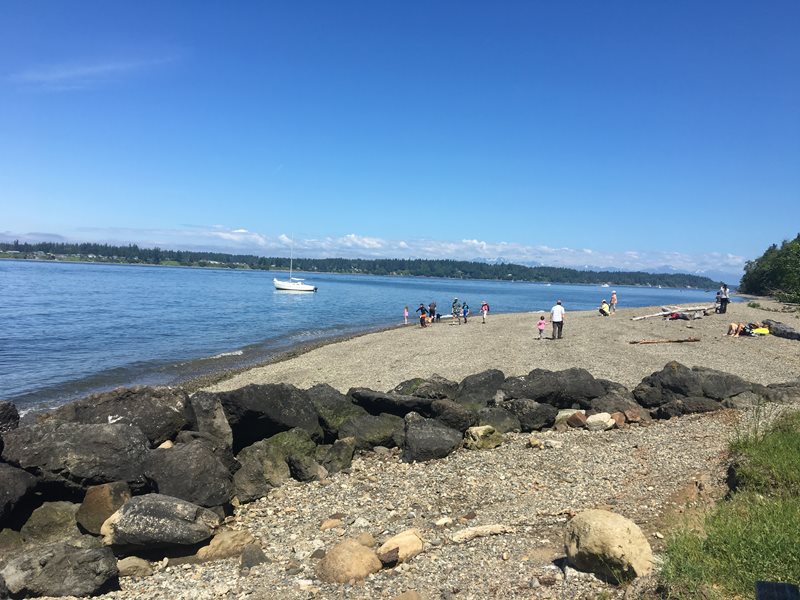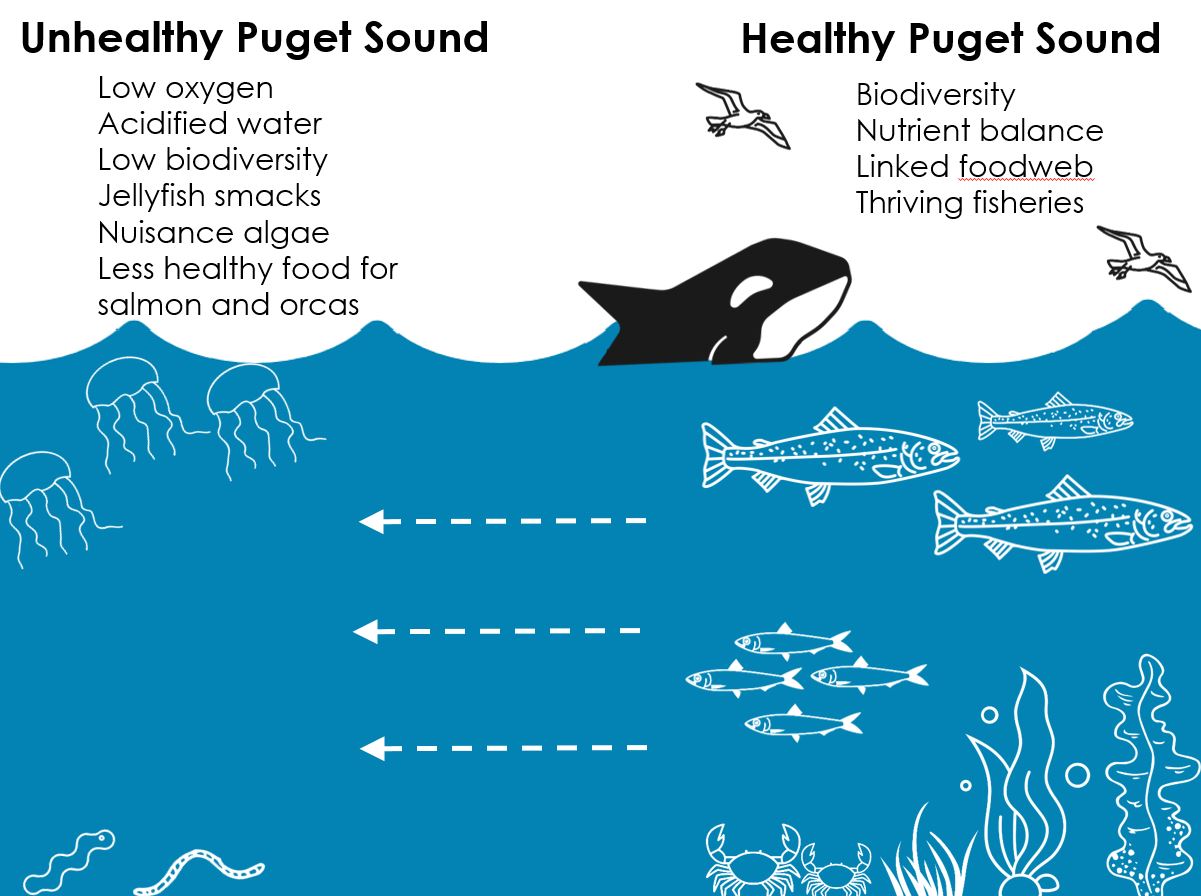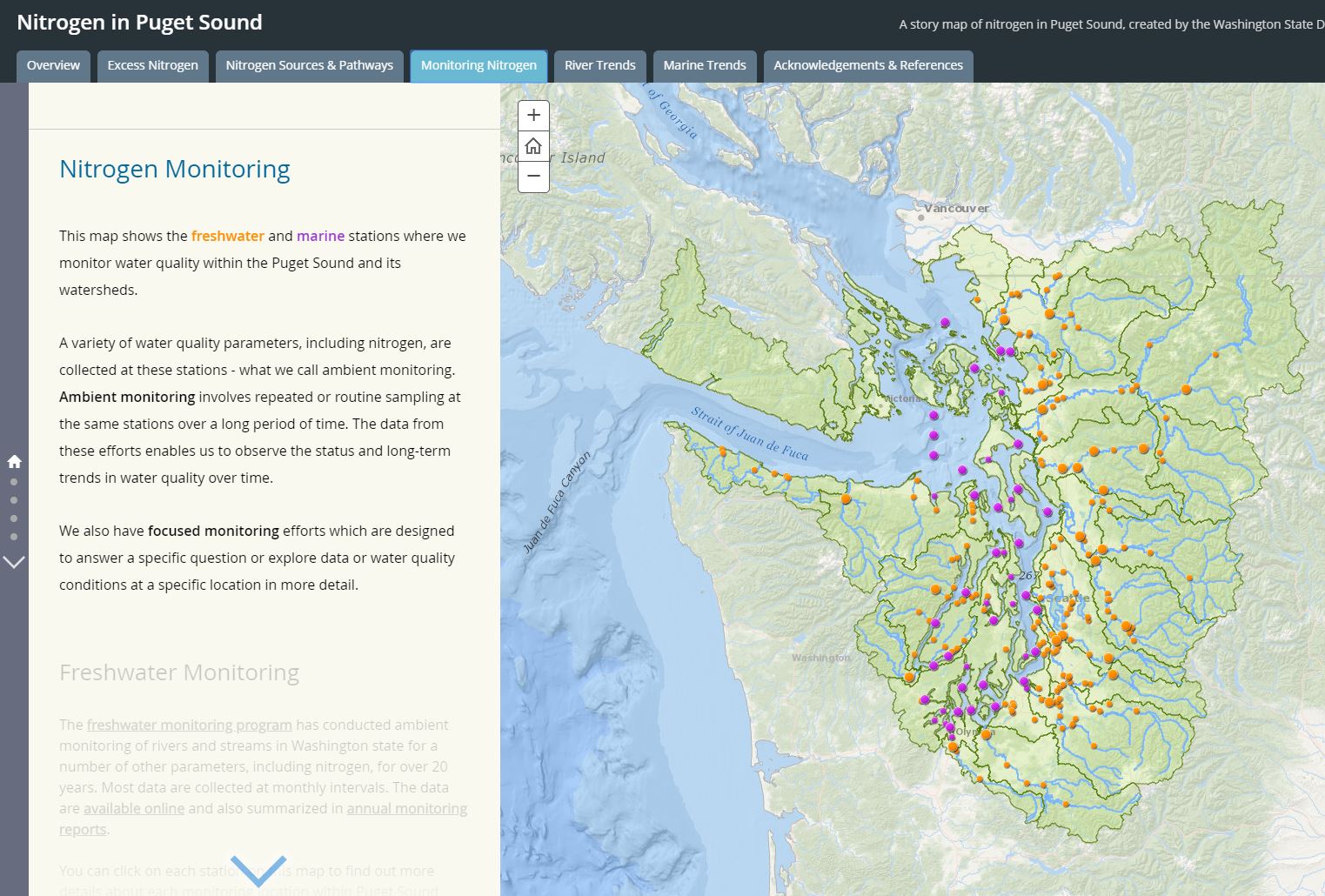
As the region’s population grows and we all experience the impacts of a changing climate, human sources of nutrients are becoming an increasingly urgent issue for Puget Sound. Nutrients are contributing to low dissolved oxygen in Puget Sound, which causes stress to aquatic organisms.
Human actions are leading to excess nutrients in Puget Sound. This type of nutrient pollution leads to stress on aquatic organisms and harms the health of Puget Sound.
In 2020, we're taking big steps to address human sources of nutrients. Science tells us that excess nutrients from sewage treatment plants (domestic wastewater treatment plants, or WWTPs) are contributing to low oxygen levels in Puget Sound. Because of this, we must require treatment plants to control nutrients consistent with the federal Clean Water Act and Washington’s Water Pollution Control Act.
Last week, we took an important step in reducing treatment plant sources of nutrients by announcing we will establish a Puget Sound Nutrients General Permit. We discussed our path forward at our Jan. 30, 2020 Puget Sound Nutrient Forum meeting, where nearly 100 people attended, representing treatment plants, local governments, state agencies, Tribes, and environmental organizations. Attendees brought questions, participated in small group discussions, and shared their feedback on how to best engage with stakeholders and gather input as we develop a draft Nutrients General Permit for review this year.
Watershed sources of nutrients also contribute to the nutrient problem in Puget Sound, including treatment plants that discharge water upstream in the watersheds, onsite septic systems, and agricultural runoff. We want to increase our monitoring of freshwater in watersheds so we can be strategic in how we prevent nutrient pollution to Puget Sound from these sources. The differences between a healthy and unhealthy Puget Sound are made clear in this illustration. Click image to enlarge.
This year, to support Ecology’s efforts to address nutrients, the Governor’s 2020 Supplemental budget proposes funding to:
- Support a robust public engagement process for a Puget Sound Nutrients General Permit.
- Advance our understanding of watershed contributions by increasing freshwater monitoring.
View more on the Governor's supplemental budget proposal for addressing nutrients in Puget Sound.
Controlling nutrients at sewage treatment plants
In 2019, we talked about our options for controlling nutrient pollution from treatment plants. After receiving public input on our preliminary determination, we've decided to move forward with a Nutrients General Permit because we think this is the best tool for reducing excess nutrients from treatment plants that discharge directly to Puget Sound. The exact permit conditions are still to be determined, but this is an important step towards addressing human sources of nutrients and protecting Puget Sound.
Nearly 70 treatment plants will be covered under this general permit. We're at the early stages of developing the general permit and new resources are needed to support the scope and scale of a general permit development process requested by stakeholders. The Governor’s supplemental budget proposes funding for staff and contractor support to ensure a robust public engagement process as we move forward with this critical work.
Taking a fresh look at nutrient inputs from rivers
We use the Salish Sea Model, a powerful computerized tool, to evaluate and guide our management actions for improving water quality in Salish Sea, including Puget Sound. With this model, we can run virtual experiments to see how water quality might change in changing conditions, for example changes to river flow or reducing human sources of nutrients. We want to continue to refine this robust model by improving our information from nutrient sources in watersheds.
Currently, we sample nutrients once a month at river mouths that enter Puget Sound. The Governor’s Budget proposal for continuous freshwater monitoring would help us better characterize water quality and nutrient discharges from the seven largest rivers that discharge to Puget Sound (Nisqually, Puyallup, Green/Duwamish, Snohomish, Stillaguamish, Skagit, and Nooksack).
Collecting this new information will allow us to better assess the monthly and seasonal impacts of nutrient loading on the Salish Sea from regional sources in the watersheds of Puget Sound. Our stakeholders have identified this as a critical investment. This information is vital for further assessing nutrient impacts on Puget Sound and for developing effective control strategies for this growing region.
Supporting the Nutrients General Permit Process and increased freshwater monitoring in watersheds are important elements of moving toward reducing excess nutrients and cleaning up Puget Sound.
Check out our Nitrogen in Puget Sound storymap to understand the science behind our nutrient reduction work. Click image to visit the storymap.
Keeping up with nutrient work in Puget Sound
Ecology staff help facilitate discussion and brainstorming at the Jan. 30, 2020 Nutrient Forum.
To stay connected to this project and to learn about upcoming Nutrient Forum meetings, please sign up for our Puget Sound Nutrients Listserv.





